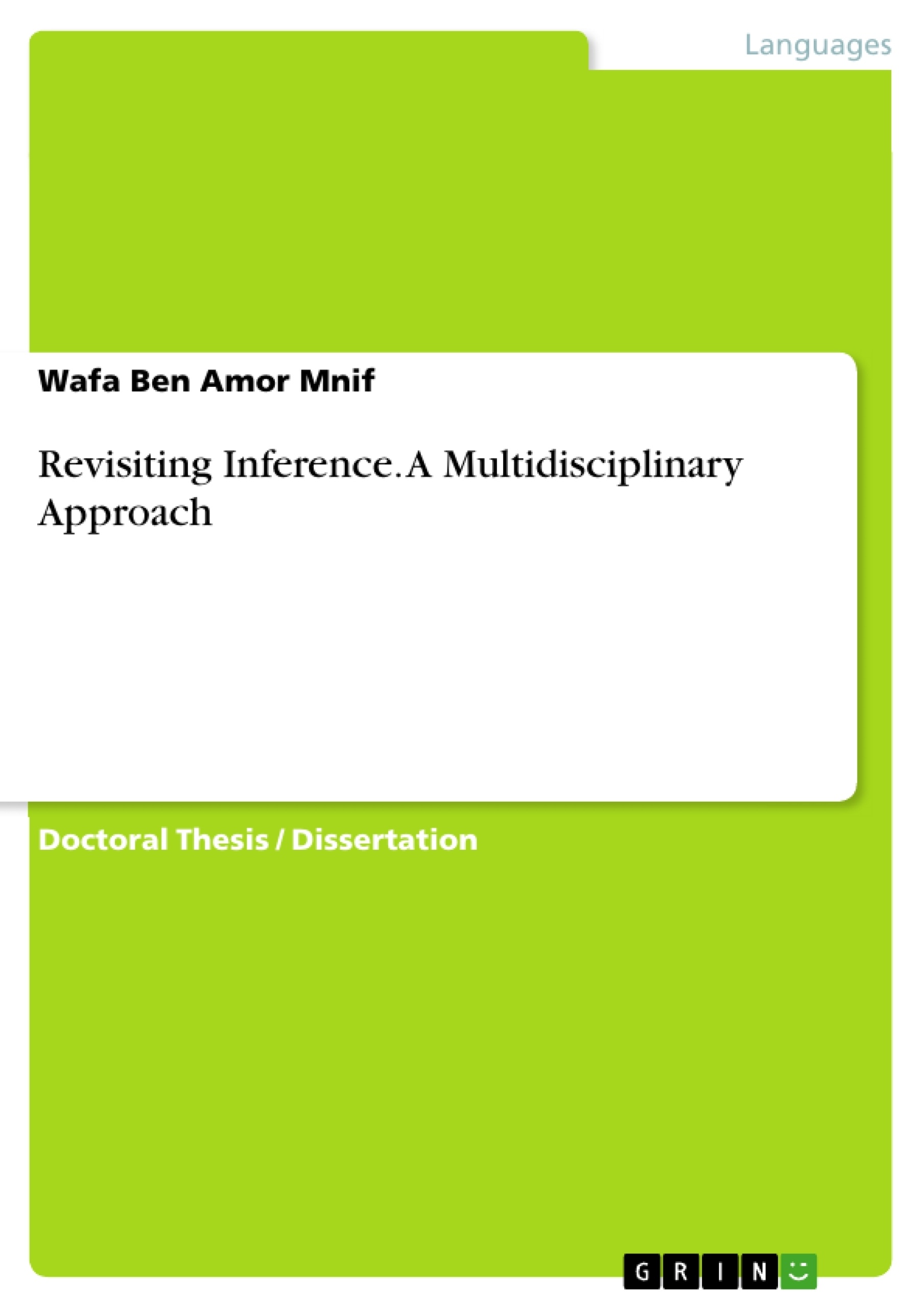Previous literature on inference has often approached it from a single perspective offering but an incomplete understanding of its full potential. For this reason, this study proposes a multidisciplinary approach to inference. Synthesizing the contributions of Logic and Pragmatics, this research builds a new Inference Taxonomy. The study claims that this newly developed theoretical model can be transformed into a discourse descriptive tool meant to complement traditional tools offered by Discourse Analysis. The most important contributions of the research is that it attempts to offer a new understanding of inference, develop that theoretical understanding into a new instrument that serves to describe discourse, and gauge the functioning of that instrument.
In order to test the functioning of the new descriptive tool and to explore the insights it can offer, the study makes use of a corpus-based approach. It applies theoretical and methodological findings to a corpus of ten texts. The analysis consists in providing a systematic description of the different types of inference underlying the texts, which is congruent with the inherently qualitative method used. Quantification is also used with the purpose of investigating the implications of the qualitative analysis.
The corpus analysis illustrates how the new inference-based instrument can provide detailed descriptions of the inferential structure of texts. It equally sheds light on the correlations that may exist between inferences found in a text and the type or topic of this text, possible similarities between different texts in inferential terms, clear tendencies or common inferential features, et cetera. Thus, the findings substantiate the research major claims. The outcome of the study is a fine-tuned multidisciplinary inference taxonomy that is translatable into an instrument of descriptive discourse analysis, which can be optimized to cover comparative, evaluative, critical, and pedagogic ends.
Inhaltsverzeichnis (Table of Contents)
- 0. Introduction.
- 0.1. Background to the study
- 0.2. Rationale behind the study
- 0.3. Major Claims
- 0.4. Research Objectives
- 0.5. Research Questions........
- 0.6. Structure of the Dissertation
- CHAPTER ONE: LITERATURE REVIEW
- 1.1.Formal Logic and the Study of Inference......
- 1.1.1.What is Logic? Towards a definition
- 1.1.1.1. Boundaries between logic and other disciplines
- 1.1.1.2. The relevance of Logic.
- 1.1.2.The Logical Study of Inference........
- 1.1.2.1. Is logic all about inference?
- 1.1.2.1.1.The matter and form of logic.
- 1.1.2.1.2. The Matter and Form of Inference ….....
- 1.1.2.2. The contributions of logic to the study of inference.
- 1.1.2.2.1. Delimitating the boundaries of inference
- 1.1.2.2.2. Types of Inference.
- 1.1.3.Types of Logic and Inference Analysis .....
- 1.1.3.1.Deductive Logic
- 1.1.3.1.1. On validity.
- 1.1.3.1.2. Categorical Logic.
- 1.1.3.1.2.1. Basic Notions
- 1.1.3.1.2.2. Validity Testing..\li>
- 1.1.3.1.2.3. Criticism of categorical logic........
- 1.1.3.1.3.Truth-functional logic
- 1.1.3.1.3.1. Basic Notions
- 1.1.3.1.3.2.Validity Testing.
- 1.1.3.1.3.3.Criticism of truth-functional logic........
- A multidisciplinary approach to inference, integrating Logic and Pragmatics.
- The development of a new Inference Taxonomy as a tool for discourse analysis.
- The application of the new taxonomy through corpus analysis.
- Exploring the relationship between inferences and textual features.
- Investigating the potential applications of the new taxonomy for comparative, evaluative, critical, and pedagogic purposes.
Zielsetzung und Themenschwerpunkte (Objectives and Key Themes)
This study aims to provide a comprehensive and multidisciplinary understanding of inference by synthesizing contributions from Logic and Pragmatics. It seeks to develop a new Inference Taxonomy that can be utilized as a descriptive tool for discourse analysis. The research investigates the functioning of this new tool through corpus analysis, aiming to shed light on the relationship between inferences and textual features.
Zusammenfassung der Kapitel (Chapter Summaries)
The introduction outlines the background, rationale, major claims, research objectives, questions, and structure of the dissertation. Chapter One provides a comprehensive literature review focusing on formal logic and the study of inference. This chapter explores the nature of logic, its relationship to other disciplines, and its contributions to understanding inference. It further delves into different types of logic and inference analysis, specifically focusing on deductive logic, including categorical and truth-functional logic, examining their strengths and limitations.
Schlüsselwörter (Keywords)
The primary keywords and focus topics of this work encompass inference, logic, pragmatics, discourse analysis, taxonomy, corpus analysis, and textual features.
- Citation du texte
- Wafa Ben Amor Mnif (Auteur), 2016, Revisiting Inference. A Multidisciplinary Approach, Munich, GRIN Verlag, https://www.grin.com/document/494625



